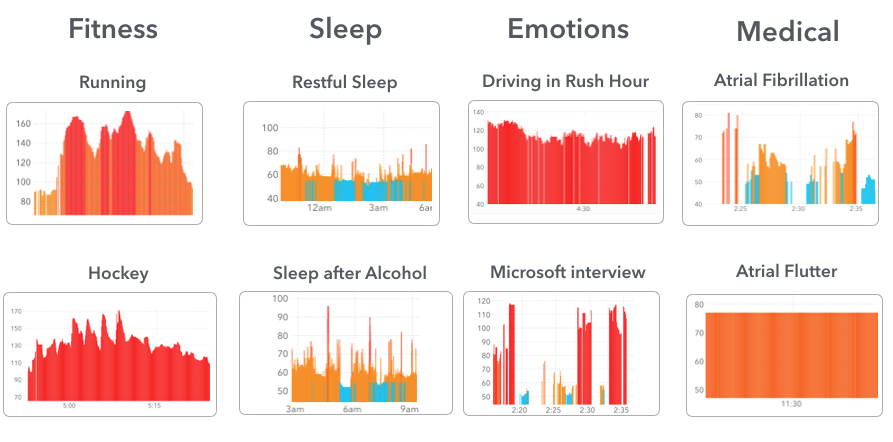

220 – age) is commonly used, but it overestimates maximal heart rate in young adults and increasingly underestimates the maximal heart rate in older adults.īeing physically active is important to prevent cardiovascular disease, the #1 cause of death in the world. A simplified age-predicted maximal heart rate equation (i.e. Here is the generalized equation for predicting maximal heart rate (HRmax) in healthy adults:įor example, a 20-year-old person, the age-predicted maximal heart rate would be 194 beats per minute and for a 65-year-old person, the age-predicted maximal heart rate would be 163 beats per minute. To determine what a normal exercising heart rate is, you first need to determine your age-predicted maximal heart rate. Your resting heart rate can also be used to estimate how much energy your body uses, or your basal metabolic rate. This means your heart has appropriate heart rate variability and recovery, which is associated with good heart health. Usually, a heart rate will be slower during sleep, faster during daily activities or with exercise, and recover quickly back to a resting rate after exercise. It is well-known that the average resting heart rate for well-trained athletes is between 40-60 beats per minute! A heart rate can change dramatically while sleeping or with daily activity and exercise. However, recent studies ( here and here) have suggested that an ideal resting heart rate is between 50-70 beats per minute. A normal heart rate is generally stated to be between 60-100 beats per minute at rest (sitting, relaxing, etc.). (Read our article Low Heart Rate)Ī resting heart rate predicts longevity and cardiovascular disease, and current evidence suggests that it is also an important marker of outcome in cardiovascular disease, including heart failure. bradycardic) at less than 60 beats per minute. tachycardic) at greater than 100 beats per minute. A resting heart rate is normal between 60-100 beats per minute.There are three general ways to classify heart rate, 1) normal, 2) fast and 3) slow. Count your pulse for the number of beats in 60 seconds (1 minute) or count your pulse for the number of beats in 10 seconds and multiply by 6 to find your beats per minute.Use the tips of your first two fingers (index and middle fingers) to press lightly over the blood vessels on your wrist or neck.

Take your pulse on the inside of your wrist on the thumb side or on the side of your neck next to your larynx (i.e.The remainder of this post will assume your heart is in sinus rhythm and will discuss heart rate. the normal pacemaker system of the heart) in the vast majority of people. By far the most common rhythm of the heart is a regular rhythm, which is usually sinus rhythm (i.e. There are three different rhythms of a heartbeat, 1) regular, 2) regularly irregular, or 3) irregularly irregular (e.g. When it comes to the beating of your heart cardiologists take note of two major parts, the rhythm and the rate. These questions are easily answered and can provide reassuring information to those worried about their heart health. What is a normal exercising heart rate?.What is a normal heart rate or pulse rate?.Basic questions that are often asked or searched on the internet include: What is a normal heart rate? Everyone wants to know what is normal, especially when it comes to heart health.


 0 kommentar(er)
0 kommentar(er)
